How to Choose a Second Spindle
words and photos by Amelia Garripoli
Great! You got your hands on a starter spindle and have been impressing friends with your new-found skills. But you know there’s more. You see lots of other spindles online and among your spindle-spinning friends. How do you choose what to get next?
Upgrade
For me, the answer was easy – my son, a toddler at the time, sat on my first spindle, a homemade CD spindle. So I went to the only local fiber store at the time and bought the only spindle they offered, a top-whorl Mongold spindle. I got lucky as the Mongold was one of the best spindles available at the time. I didn’t mind the price as I was adoring this new skill and knew I would be doing it a lot. And it was worth it!
So, one approach to take is to choose an “upgrade” from your starter spindle, toddler-damaged or not. Given you have put in time on that spindle already, the most straightforward upgrade is a well-made spindle of the same type so you can continue applying the skills you are developing.
Try a different type
But perhaps you are more adventurous than that; if so, you might want to choose a different type of spindle as your second spindle. If you started with a top-whorl, perhaps try a Turkish spindle. If you started with a tahkli, perhaps try a Navajo spindle. If you started with a bottom-whorl, perhaps try a Tibetan spindle. You will find you have a lot more to learn, as each type of spindle has its own techniques to master. But having 2 different types of spindles also means you can put one down when you get overwhelmed by it and try the other.
My third spindle helped me – after the Mongold, I got a Navajo spindle. Having the chance to put one down and try the other, I could apply skills common to all spindles such as drafting, while moving between suspended and supported spindle skill development. This let me persevere. When the Navajo spindle frustrated me, I would return to the Mongold spindle.
Match your skills
Your current skills may also be pointing you to a second spindle. If you are spinning super-fine and fighting your spindle to do so, try a featherweight – Bosworth makes excellent ones, or look for an Ahka spindle, which are typically also light. Or if you are loving chunky yarn, you may want to try a Navajo spindle or a Portuguese spindle. These supported spindles are good for spinning thicker yarns, as are heavier suspended spindles. Focus your choice to focus your spinning, choosing the spindle appropriate for the yarn you want to spin.
Choose lightweight spindles for finer yarns, heavier spindles for thicker yarns. Or look to the historical spindle used for the yarn you want to produce – spinning is such an ancient skill that historically appropriate spindles often are the best tool for the job.
Watch a friend
A fourth way to make the choice is to see what your spindle-spinning friends spin. Find out what spindle type they like, and get one of those. Your friend may happily help you learn its techniques and provide you with ample demonstrations of how to spin on it. In fact, learning by mimicking those who already have the skills is a time-tested way of developing spinning skills.
I have a friend whose favorite spindle is the tahkli. The tahkli is not a common beginner spindle, but she gravitated toward it due to her love of cotton. Her demonstrations, calm technique, and results convinced me I could master this spindle’s needs and kept me going when I struggled to become a supported spindle spinner.
Make one spindle work for you
I have run across people who have only one spindle and do not desire to own more. I applaud their minimalism, and with persistence you can make one basic spindle spin a wide variety of yarn, despite everything written to encourage you to own more than one spindle, including this article! That one spindle could be a simple homemade spindle; it could be a suspended spindle or a supported spindle. My go-to “solitary” spindle would be a Turkish spindle just under an ounce with a long enough stem below the arms that I could use it supported or suspended. This would let me spin fine spindles, and it would also spin thicker yarns and ply, albeit a little slowly at first until the weight of the yarn on it helped speed it up.
Now, these 4 sensible options – upgrade, adventure, focus, or friend – may all fly out the window if you get the opportunity to go to a wool festival vendor hall, in person or virtually. If you see a spindle that appeals to you, it may become your second spindle. Like choosing fiber that appeals to you, having a tool you like will help you persist as you learn.
Happy spindling!
Amelia Read Garripoli spins, weaves, and dyes near her parents in Colorado, having recently relocated her stash, spindles, and lots more from Washington. She’s spinning and weaving her way through the pandemic at home but can’t wait to attend and teach at Colorado guilds and festivals!
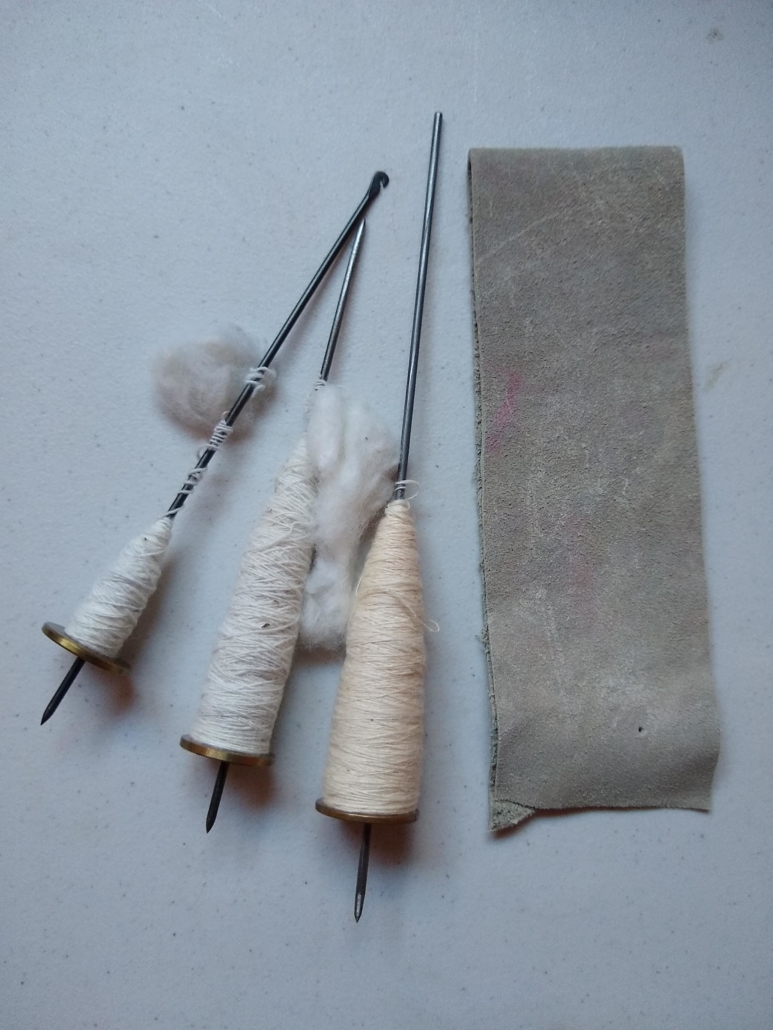
The tahklis and a leather strip to spin them on. With the strip on my leg, I can spin in a small space.
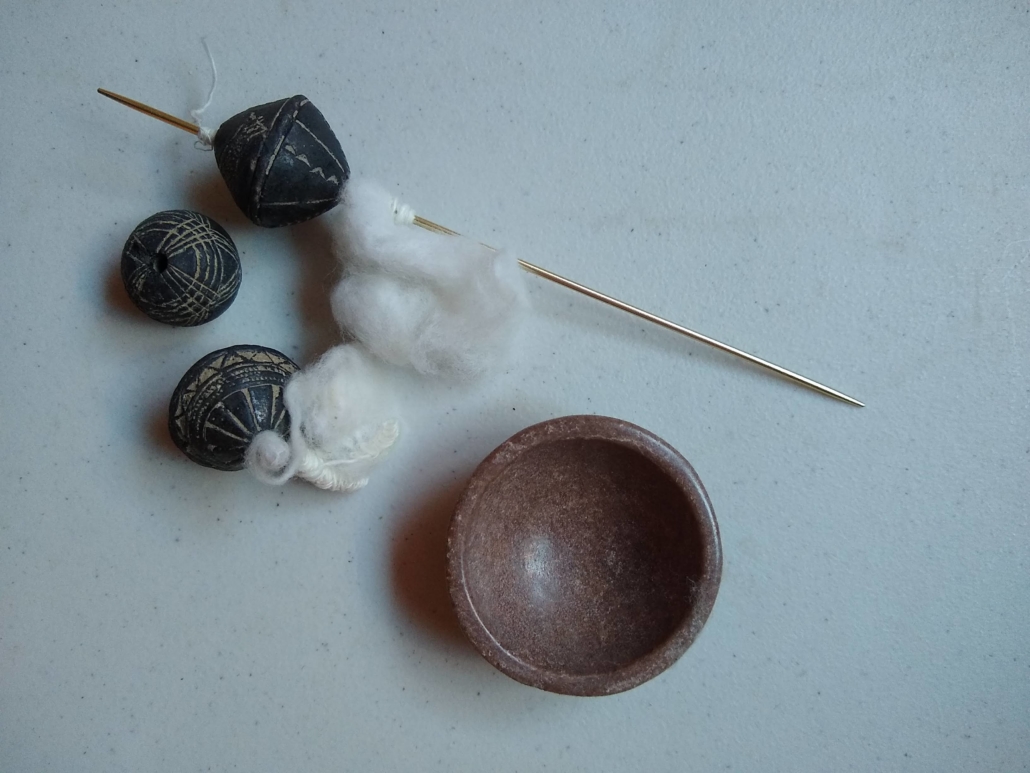
I was interested to try out some of the beads I have; the conic ones are African and the round one is South American – or so I was told at the point of purchase. The one on the double-pointed knitting needle spun the best, nicely balanced. A little fimo bowl travels with these in a pencil case for use while spinning. I still like my tahklis better but was pleased with the bead that spun well.
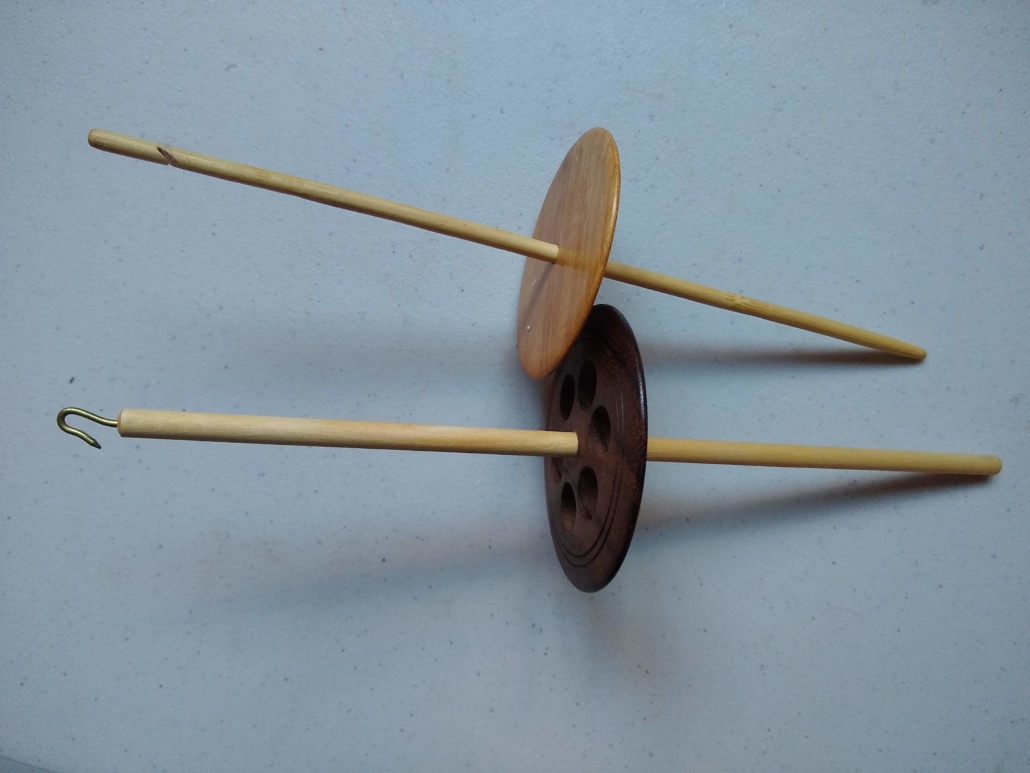
Ahkas! These are my favorite support spindle, though you wouldn’t know that from their nakedness.
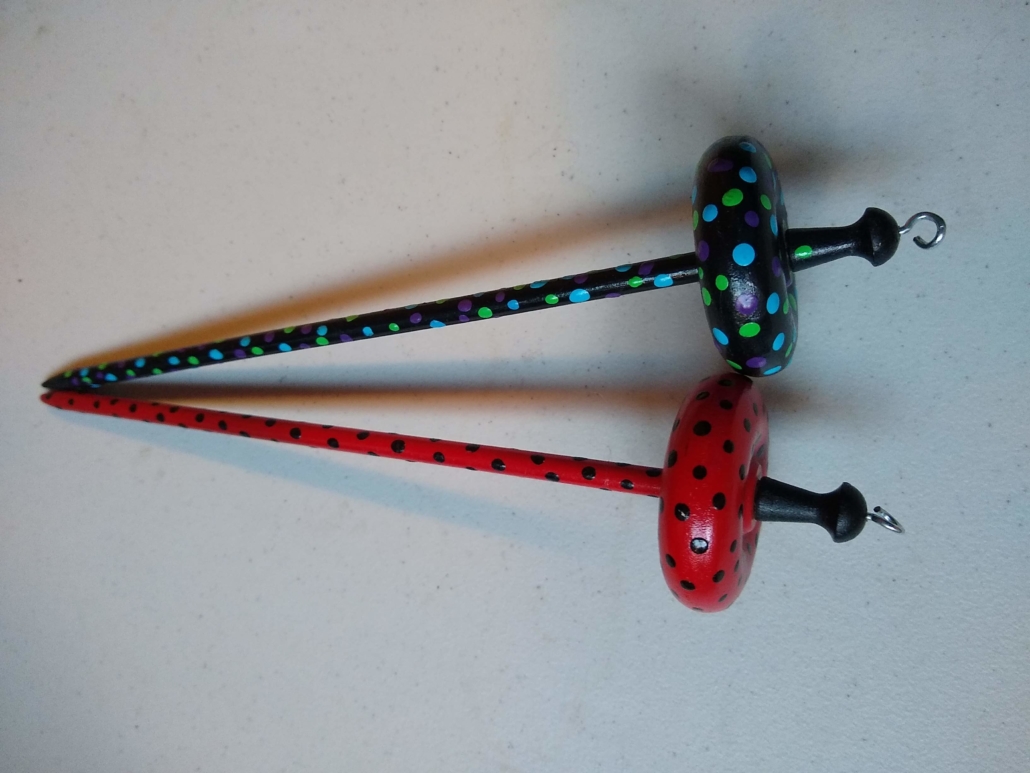
Spindles can be special just because someone cared; the red ladybug style was made by my BFF Debbie, and the black polka-dotted one was made by my daughter Natalie when Debbie gifted her the paints and parts. They are sweet spinners, at just about an ounce in weight, and the dots on the shaft give them a nice grippability for flicking. Even toy wheel spindles rock!
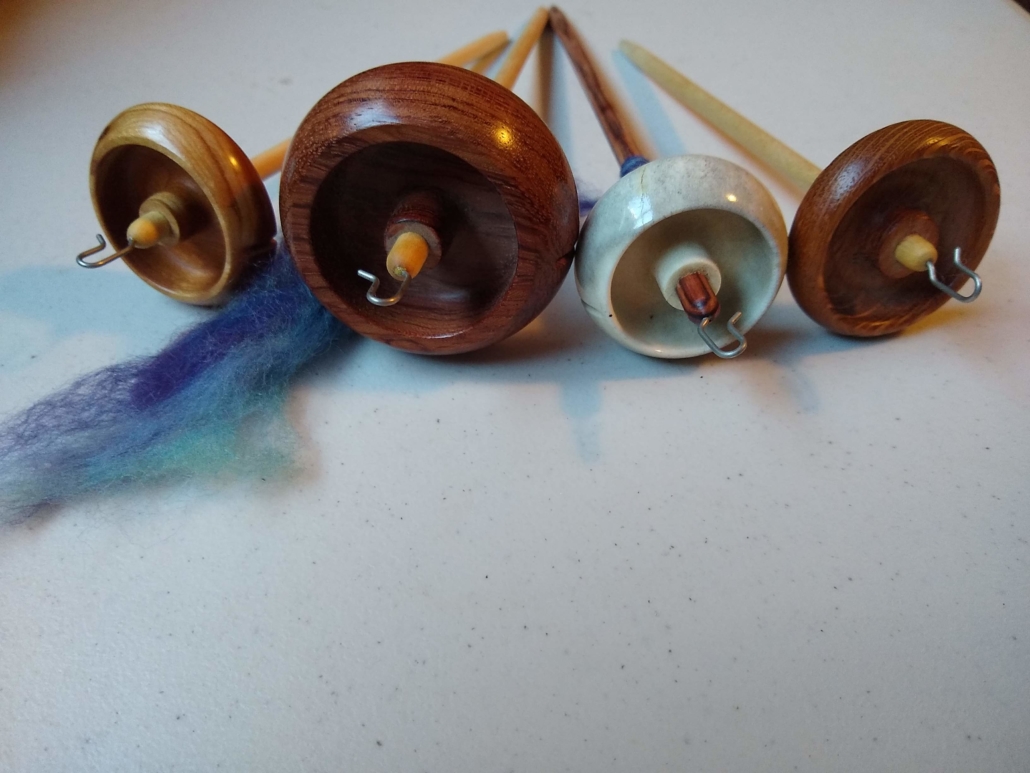
Bosworths!
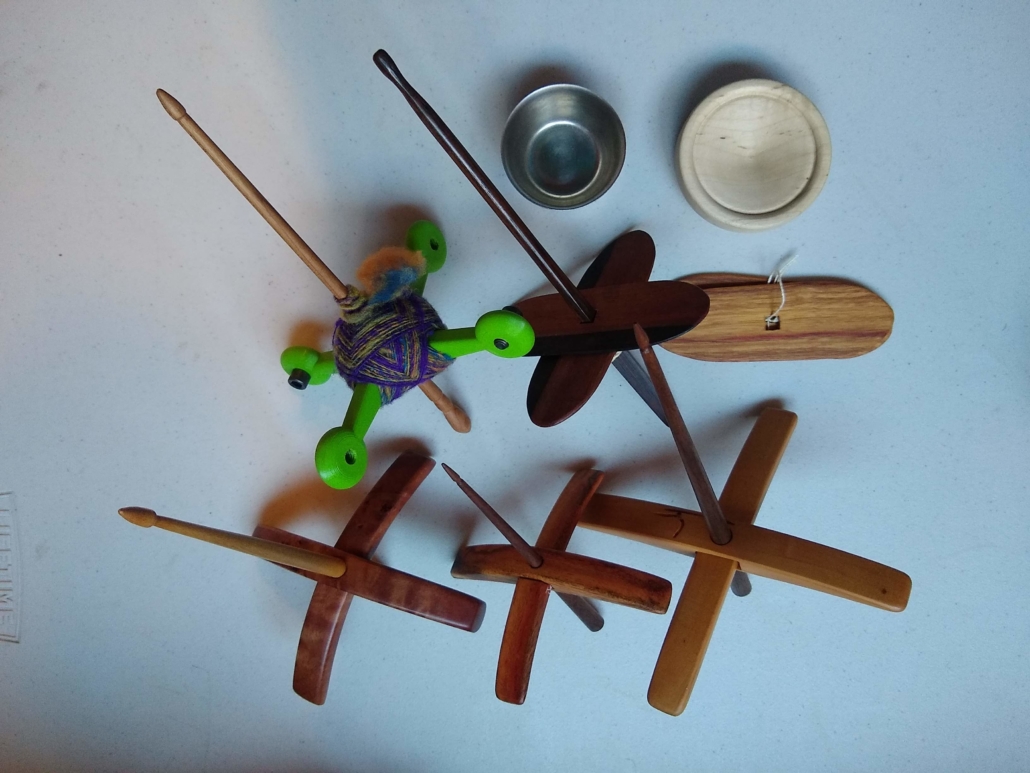
A flight of spindles! Lovely Turkish/cross-arm spindles, along with a metal bowl and dimpled wooden saucer to try out support spindling. As you can tell, I got mesmerized winding the mandala on the Snyder weighted-arm spindle.
PLY Magazine believes that Black lives matter, as well as LBGTQI+ lives. Those most vulnerable and persecuted in our communities deserve our love and support. Please be good to each other.

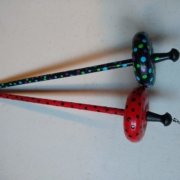


Leave a Reply
Want to join the discussion?Feel free to contribute!